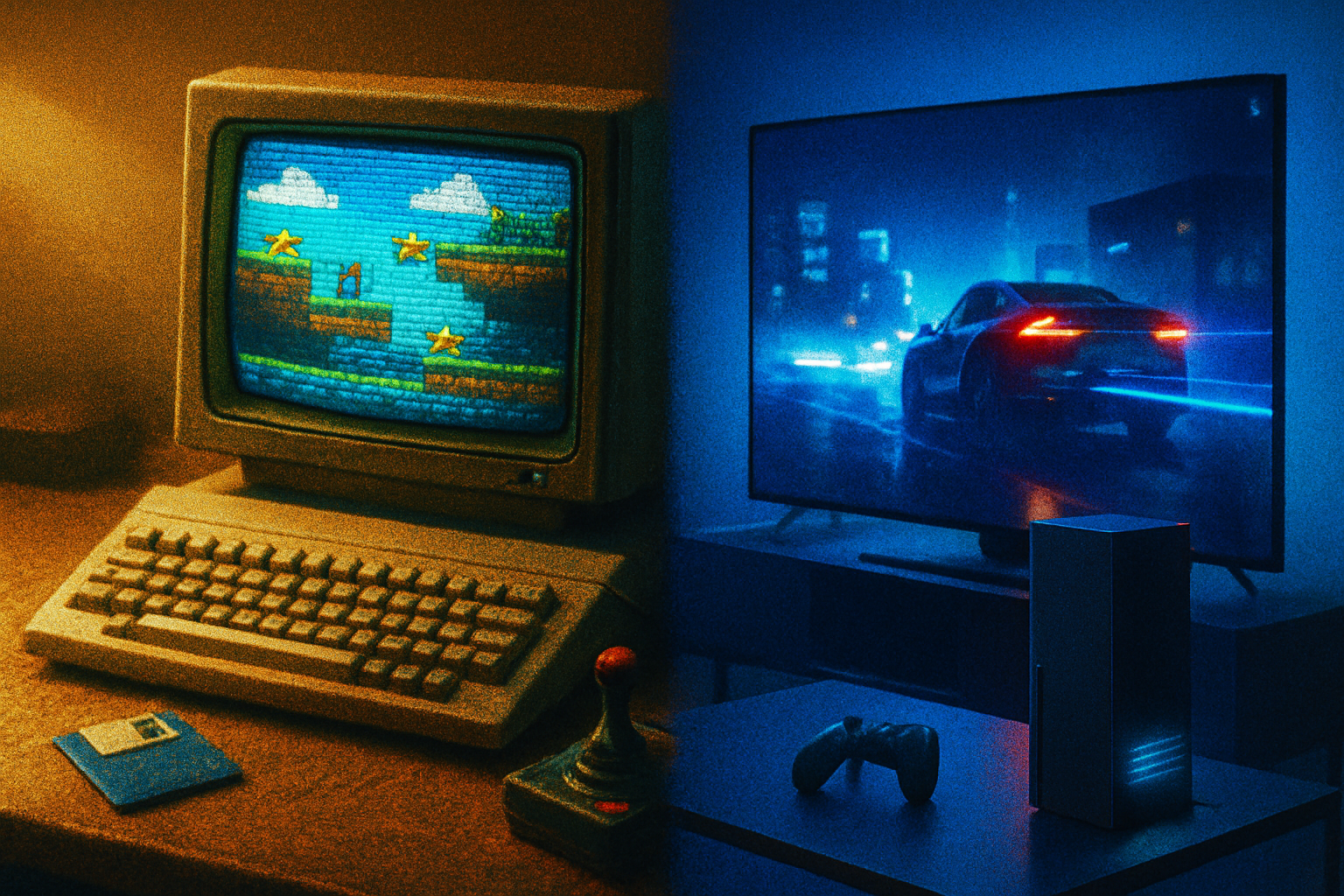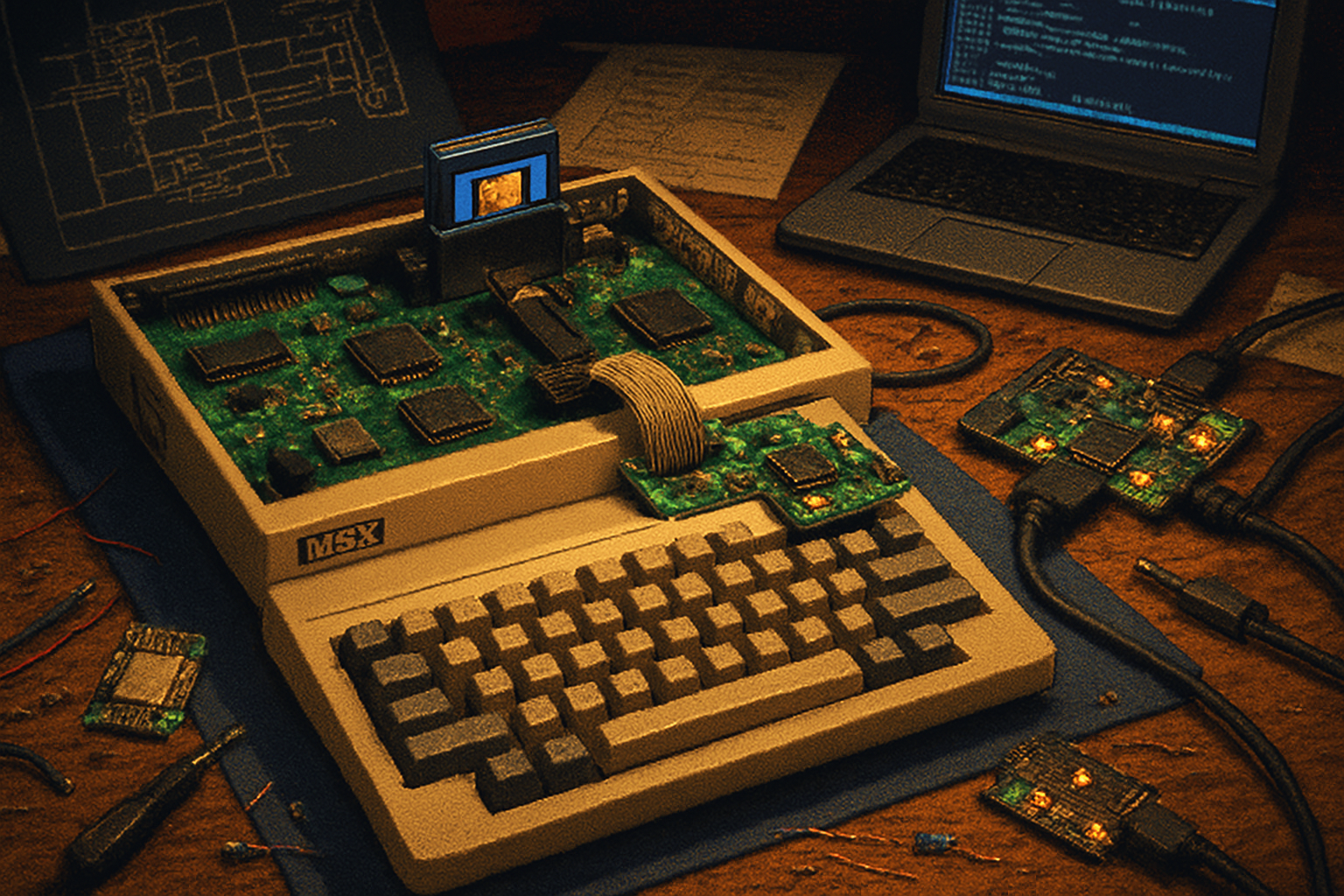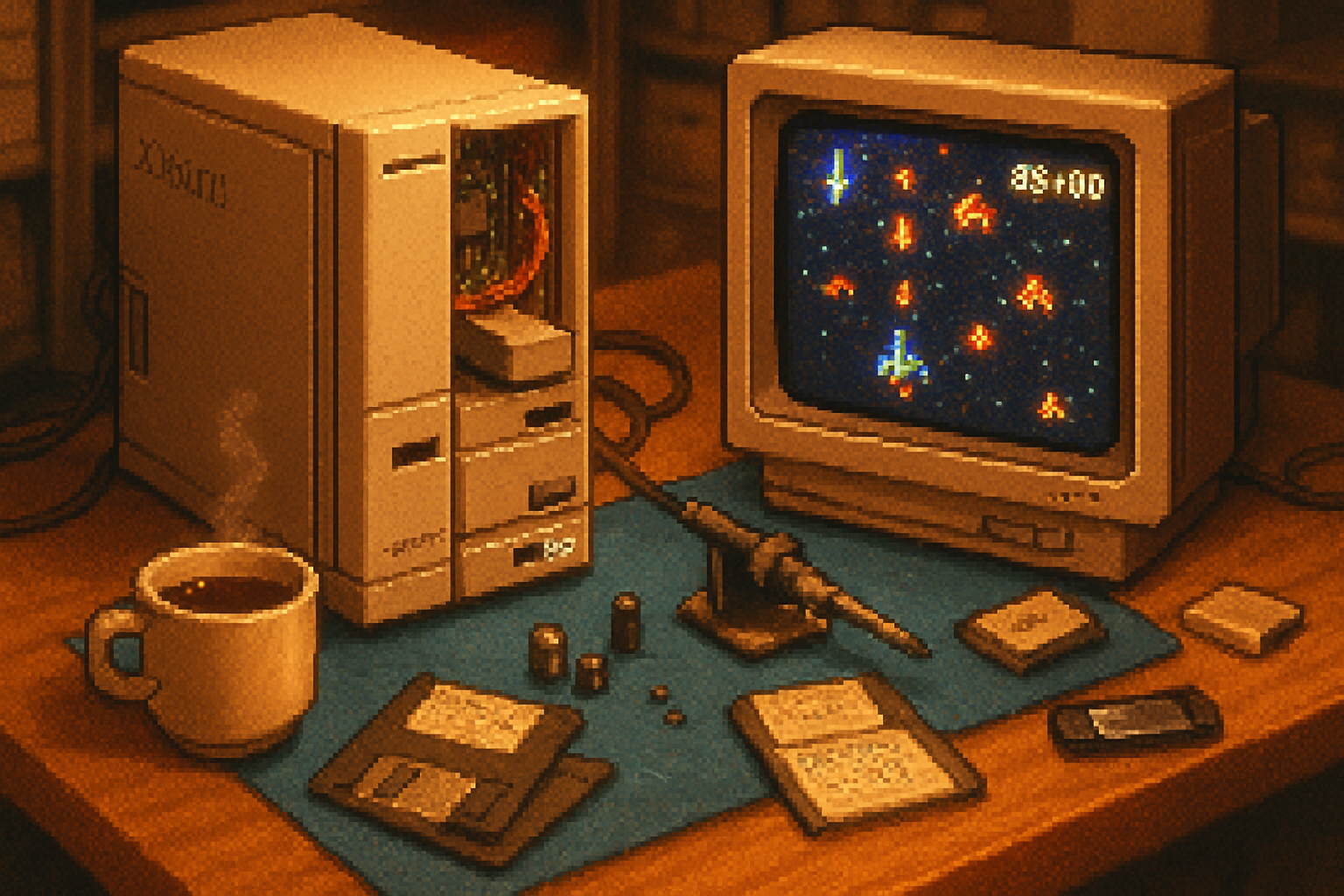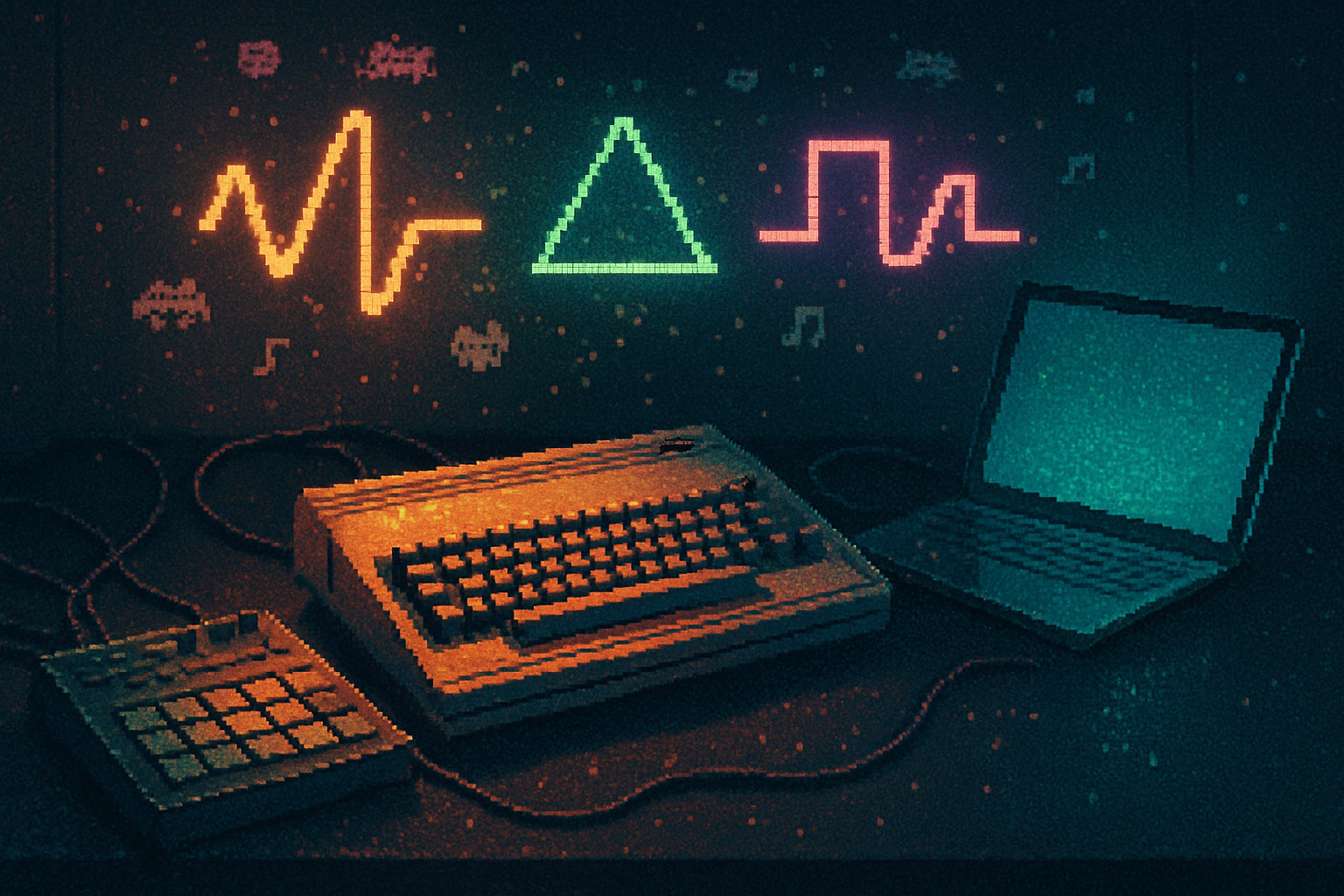· retrotech · 6 min read
The VIC-20 Revival: Why Retro Gaming is Making a Comeback in 2023
The Commodore VIC-20 has quietly re-entered the cultural conversation. This post explores why 2023 saw renewed interest in the VIC-20 and other vintage systems - from nostalgia and preservation to new generations learning to code on 8‑bit hardware - and how that energy is shaping a fresh wave of homebrew games and hardware projects.
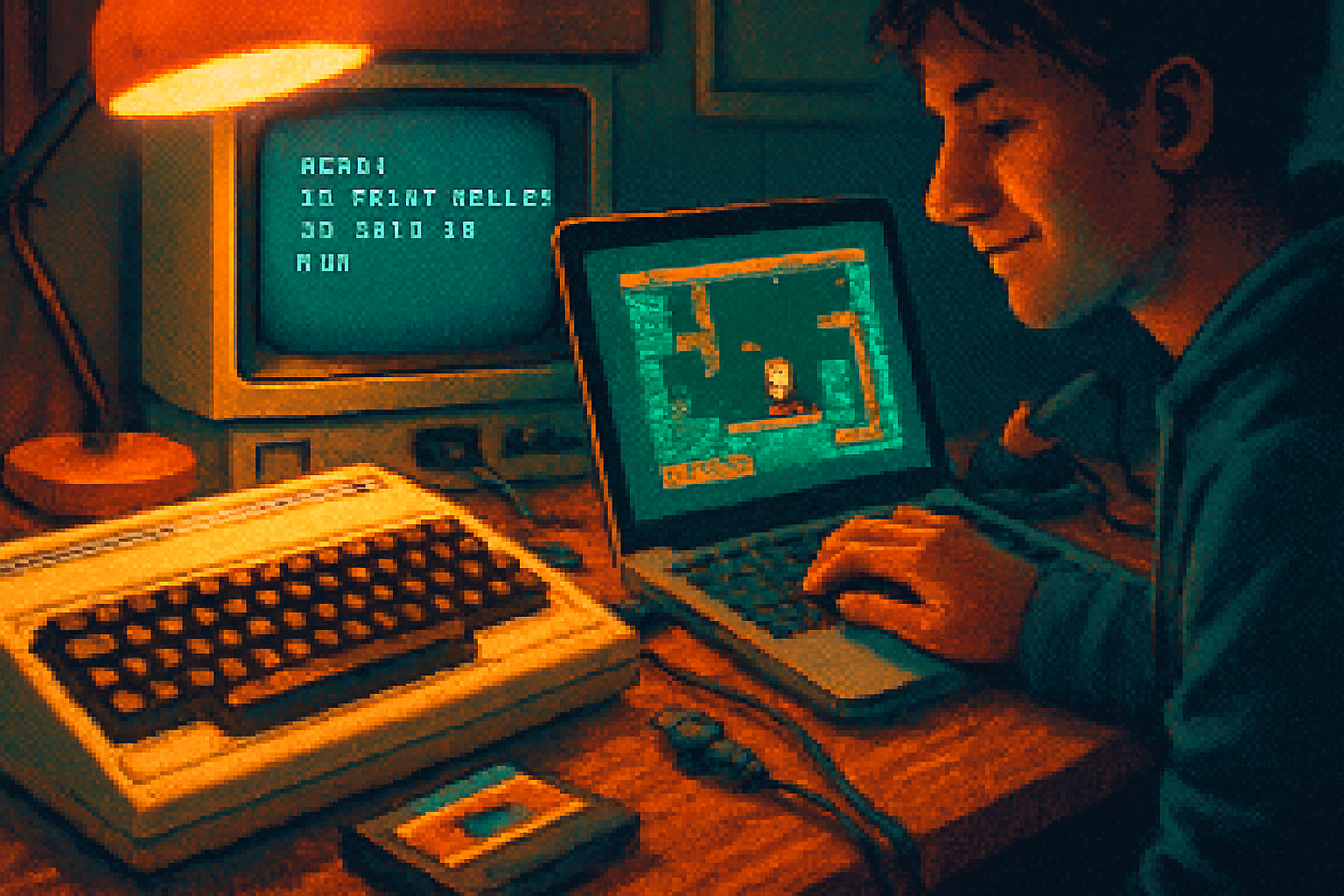
A tiny machine, a big comeback
In 1980 Commodore released the VIC-20: an affordable, entry‑level home computer that introduced a generation to programming and home gaming. With roughly 5 KB of RAM (expandable), a MOS 6502‑family CPU and a colorful personality, the VIC‑20 was the first computer to sell over a million units and became a cultural icon in its era 12.
Fast forward to 2023: the VIC‑20 - alongside other vintage machines - is enjoying renewed attention. This isn’t just nostalgic collectors dusting off old hardware; it’s an active, creative revival that’s bringing new players, developers and makers into the retro fold.
Why now? The forces powering the revival
Several converging trends explain why retro platforms like the VIC‑20 regained cultural momentum around 2023.
Nostalgia meets pandemic‑era rediscovery. The last few years accelerated personal retrospection - people sought simpler pleasures and revisited the formative tech of their youth. That emotional pull is a powerful engine for renewed interest in classic machines.
Accessible emulation and preservation. Mature emulators like VICE make it trivial to run VIC‑20 software on modern machines, removing the hardware barrier to entry and letting newcomers experience the platform immediately 3.
Affordable vintage hardware and clones. The market for working VIC‑20 units and peripherals has stabilized, and a parallel market of FPGA projects, mini reissues (e.g., the C64 mini) and reproduction cartridges makes hardware participation easier without needing a museum‑grade unit [^4].
A thriving maker and indie scene. Tools, cross‑compilers and tutorial content have lowered the technical barriers for hobbyists who want to write real code for real 8‑bit hardware. That draws programmers who appreciate constraints as a creative challenge.
Social media communities and streaming. YouTube videos, Twitch streams, Reddit and Discord groups amplify discoveries - a compelling demo or homebrew game can spark wide interest overnight.
Game design as craft and education. Retro platforms provide a teachable sandbox where game designers learn fundamentals - memory limits, cycle timing, input constraints - that modern engines often hide.
What the VIC‑20 revival looks like in practice
The revival shows up in multiple overlapping ways.
Homebrew games and demos - hobbyists are releasing new titles and graphical demos that run on real VIC‑20 hardware or in emulators. These projects range from simple BASIC experiments to advanced assembly‑level work that pushes the machine beyond what many assumed possible.
New peripherals and hardware projects - from cartridge expansions to modern storage solutions (SD card interfaces, USB adapters and FPGA recreations), makers are building gear to make the VIC‑20 usable in a modern context.
Educational inroads - educators and hobbyists use the VIC‑20 to teach programming fundamentals. BASIC entry points and tight resource constraints foster clarity about how software maps onto hardware.
Community exhibitions and competitions - retro computing meetups, online compos and game jam events provide social outlets for creators and encourage higher quality releases.
Why the VIC‑20 specifically attracts modern creators
The VIC‑20 is especially attractive for several reasons:
Simplicity and personality - its limited memory and colorful character set force creative programming decisions - a compelling constraint for designers.
Historical significance - as an approachable “first computer” for many, the VIC‑20 carries sentimental weight that motivates preservation and storytelling
A gentle learning curve - BASIC on the VIC‑20 remains readable and forgiving, making it an ideal gateway for new coders.
An active ecosystem - thanks to emulators, documentation and hobbyist projects, newcomers can get results quickly and then explore deeper (assembly, cartridge development, hardware mods).
Tools and infrastructure behind the scenes
Several modern tools and platforms have been essential to the revival:
Emulation (VICE). VICE provides robust VIC‑20 emulation for development and playtesting, letting creators iterate quickly without worrying about fragile vintage hardware 3.
Development toolchains. Cross‑assemblers, modern editors and repositories let developers write code on contemporary machines and target VIC‑20 binaries or cartridge images.
Distribution platforms. itch.io and GitHub are popular places for creators to publish and share homebrew games, ROM images, source code and documentation, connecting retro creators with global audiences 4.
Community archives and documentation. Sites and scanned manuals keep reference material accessible to newcomers and preserve technical knowledge that might otherwise be lost 2.
Examples & case studies (what people are actually making)
While the homebrew scene is diverse, a few recurring project types illustrate the revival’s creative energy:
Tiny games and remakes. Developers rework classic game ideas to fit VIC‑20 constraints, often achieving surprising polish with careful design.
Demos and art pieces. The demo scene - historically strong on other Commodore platforms - produces audiovisual showcases that test the VIC‑20’s limits and inspire others.
Hardware add‑ons. SD/USB storage interfaces, modern audio output mods and cartridge expansion boards make the VIC‑20 more convenient and reliable for daily use.
Educational toolkits. Beginner tutorials, annotated code examples and guided projects help new programmers build confidence by shipping small, complete programs.
Communities and where to find them
If you want to dive into the scene, these are good starting points:
- VICE (emulator) - https://vice-emu.sourceforge.io/ 3
- Historical and technical references - old‑computers.com: https://www.old-computers.com/museum/computer.asp?c=320 2
- Maker coverage and projects - Hackaday VIC‑20 tag: https://hackaday.com/tag/vic-20/ 5
- Distribution and indie releases - itch.io: https://itch.io/ 4
Beyond websites, look for niche Discord servers, Reddit communities (r/retrogaming or machine-specific groups), YouTube channels showing teardown and programming videos, and local retro meetups.
How newcomers can get involved (practical steps)
- Try emulation first. Install VICE and boot a few classic VIC‑20 programs to understand the platform’s feel and limitations 3.
- Learn VIC‑20 BASIC. Start by editing and running short programs on the emulator. BASIC is forgiving and instant.
- Move to cross‑development. When ready, try assembling or cross‑compiling small projects and testing them in the emulator.
- Join the community. Share experiments, ask for feedback and participate in jams and compos.
- Consider hardware. If you want a physical experience, source a working VIC‑20 or try modern reproductions and cartridge solutions.
What the revival means for the broader games and maker ecosystems
The VIC‑20 resurgence is more than nostalgia‑fueled collecting. It represents a cultural shift with practical consequences:
- Preservation and history - renewed attention helps preserve documentation, source code and hardware knowledge for future generations.
- Educational value - constrained platforms remain excellent teaching tools for fundamentals that scalable modern tooling can obscure.
- Creative constraints as a discipline - working within 8‑bit limits sharpens design thinking in ways that inform larger projects and modern game design.
- Cross‑generational exchange - older hobbyists share knowledge and artifacts with younger makers who bring modern tooling and distribution to the vintage scene.
Looking forward: is this a fad or a durable movement?
While trends ebb and flow, the infrastructure supporting retro revival has matured. Robust emulators, active communities, modern development stacks and accessible distribution channels suggest this isn’t a short‑lived craze. Instead, the revival is settling into a sustainable niche that blends preservation, art, education and playful experimentation.
Further reading and references
- VIC‑20 - Wikipedia: https://en.wikipedia.org/wiki/VIC-20 1
- VIC‑20 page at Old‑Computers.com (specs & history): https://www.old-computers.com/museum/computer.asp?c=320 2
- VICE emulator: https://vice-emu.sourceforge.io/ 3
- Itch.io - indie and retro game distribution: https://itch.io/ 4
- Hackaday - VIC‑20 tagged projects and articles: https://hackaday.com/tag/vic-20/ 5
Footnotes
Wikipedia contributors. “VIC‑20.” Wikipedia, The Free Encyclopedia. https://en.wikipedia.org/wiki/VIC-20 ↩ ↩2
“VIC‑20” entry on Old‑Computers.com. https://www.old-computers.com/museum/computer.asp?c=320 ↩ ↩2 ↩3 ↩4
VICE - Versatile Commodore Emulator. https://vice-emu.sourceforge.io/ ↩ ↩2 ↩3 ↩4 ↩5
itch.io - indie game marketplace and community. https://itch.io/ ↩ ↩2 ↩3
Hackaday VIC‑20 tag page. https://hackaday.com/tag/vic-20/ ↩ ↩2
